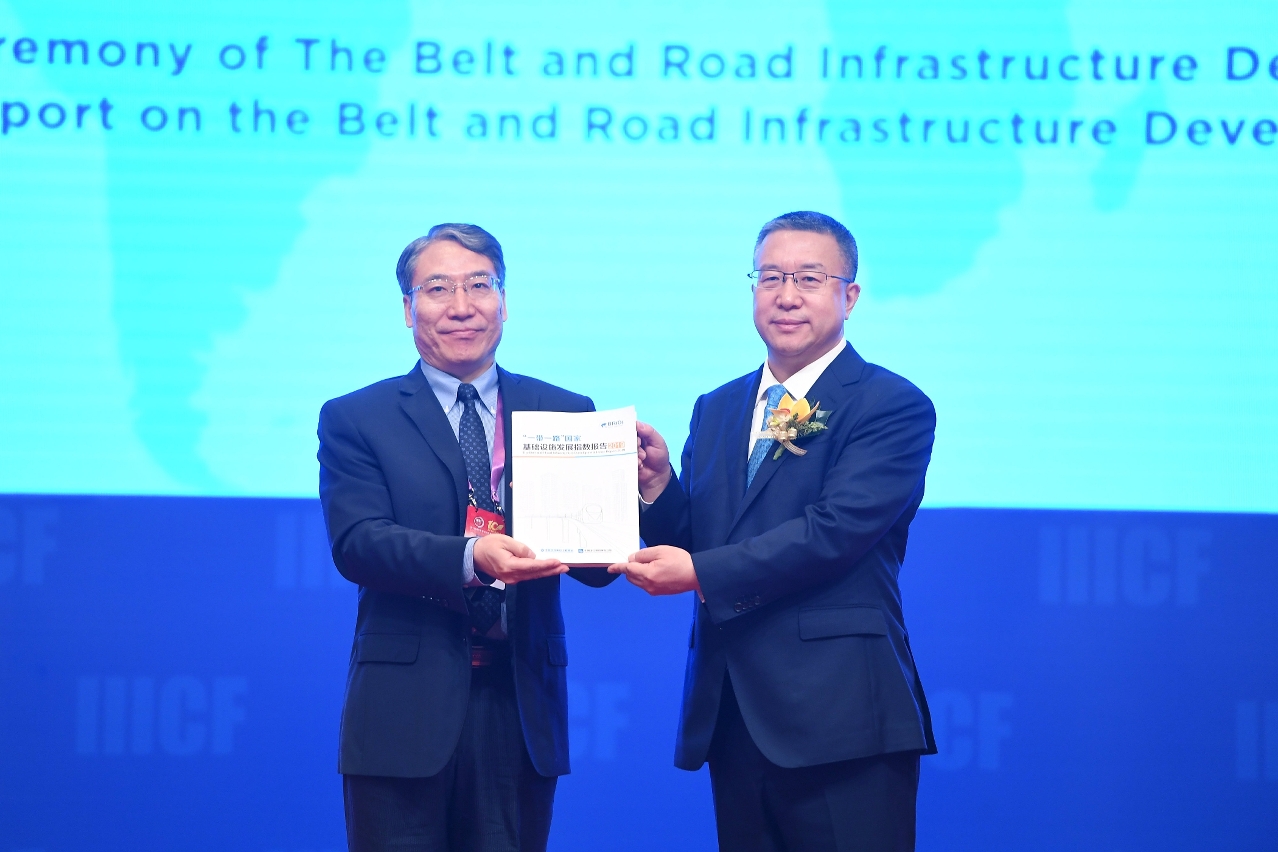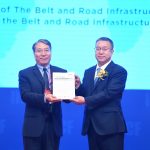 The Belt and Road Infrastructure Development Index 2019 and the Annual Report on Development of the Belt and Road Construction (2019) are released today.
The Belt and Road Infrastructure Development Index 2019 and the Annual Report on Development of the Belt and Road Construction (2019) are released today.
The launch ceremony of the Belt and Road Infrastructure Development Index 2019 and the Annual Report on Development of the Belt and Road Construction (2019) was held at the “10th International Infrastructure Investment and Construction Forum” (IIICF) today (30 May). In order to maximise the influence of Macao’s role as the “Commercial and Trade Co-operation Service Platform between China and Portuguese-speaking countries”, information of Mainland China’s enterprisers’ involvement in Portuguese-speaking countries (PSC) infrastructure development has been introduced in the reports, providing statistics and evaluation of prospect of infrastructure co-operation for enterprises from China, “Belt and Road” countries and Macao.
In his speech at the launch ceremony, President of the China International Contractors Association Mr Fang Qiuchen said that the infrastructure investment co-operation between China and PSCs is constantly deepening at a steadily growing speed. As the development pace of Portuguese-speaking countries varies from region to region, infrastructure co-operations in these regions have different emphasis. He added that vibrant market environment and stable demands for construction will support the continuous improvement of PSC infrastructure co-operation.
The reports conclude five characteristics of the infrastructure development in different “Belt and Road” countries: firstly, the speed “Belt and Road” infrastructure development has slowed down yet maintained at a relatively high level, implying that good performance of infrastructure development in “Belt and Road” countries can be expected in the coming two to three years; Secondly, level of infrastructure development in different regions varies. Southeast Asian regions claim the leading position and stands at the first in regional ranking with a high score of 125. In national ranking, Indonesia, Vietnam, the United Arab Emirates, Pakistan and Russia occupy the top five. Brazil, Portugal and Angola rank the first three among Portuguese-speaking countries; Thirdly, the strong demand for transport and energy industries’ growth is vitalising international infrastructure co-operation. Infrastructure investment co-operation between China and Portuguese-speaking countries is constantly deepening and maintaining a robust growth; Fourthly, diversified capitals are supporting the “Belt and Road” infrastructure development, attracting more and more private capital to the “Belt and Road” infrastructure projects; Fifthly, as the “Belt and Road” development forges ahead, co-operation models are evolving.
The Report also put forward three suggestions: firstly, grasping opportunities arising from the “Belt and Road” Initiative by improving quality and efficiency of infrastructure facilities with importance placed on connectivity; Secondly, upholding the principle of win-win co-operation and legally participating infrastructure projects, in order to motivate economic and social development with sustainable infrastructure; Thirdly, raising awareness of risk resilience, reinforcing rick management, rationally utilising financial and insurance tools to ensure stable progress of “Belt and Road” collaboration projects.
The Belt and Road Infrastructure Development Index 2019 and the Annual Report on Development of the Belt and Road Construction (2019) are now available online at www.bridi-research.com and www.iiicf.org.


